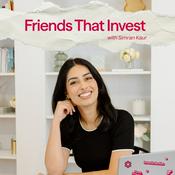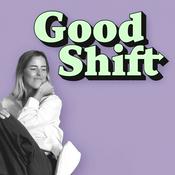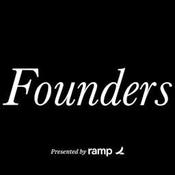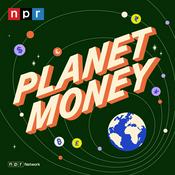745 episodes

Gold turns from a risk haven to a speculative play
22/12/2025 | 4 mins.
Kia ora,Welcome to Tuesday’s Economy Watch where we follow the economic events and trends that affect Aotearoa/New Zealand.I'm David Chaston and this is the international edition from Interest.co.nz.Today we start with news precious metals prices are zooming higher today, most to new all-time heights.But first in the US, the Chicago Fed's National Activity Index is back being tracked following the shutdown and it shows activity still notably lower than its long run trend, even if it did improve in September from August. It is barely back to the same drag level it was a year ago.American holiday retail sales for November and December are projected to grow between +3.7% and +4.2% over the same months last year, a weaker gain than last year's +4.3% increase. Revenue growth in November was about +1% compared to November 2024, with flat unit demand. Consumers are reportedly cautious, focusing spending on necessities, and higher-income consumers are driving most of the spending, while lower-income consumers remain constrained. Inflation-adjusted sales volumes are probably not growing. Ecommerce is a bright spot, with Deloitte forecasting a +7% to +9% growth for the season.In Canada, their November PPI came in +6.1% higher than a year ago. But this result was twisted by the very sharp run-up in the costs of precious metals, and diesel (after US sanctions on Russian diesel twisted their demand for Canadian product). But even without those, they would have had more than a +4% rise.In Japan at one point yesterday, their 10 year government bond hit 2.10% and its highest level since 1999. It has eased slightly since, but this has had a depressive impact on the Yen, and there is market talk of intervention now.In China, their central bank held key lending rates at record lows for a seventh consecutive month in December, as expected. Earlier they had left their seven-day reverse repo rate unchanged at 1.4% and this is now their main policy rate. They seem to have less intentions for more monetary stimulus as the economy looks like it is on track to meet this year’s growth target of "around 5%".And staying in China, they have slapped some substantial duty penalties on certain EU dairy products. The claim is that the French and Dutch subsidise their production. Although these new duties are relatively narrowly targeted, it will be a major trade escalation in the eye of the EU.And we should also note that India and New Zealand have agreed a new substantial free trade deal. Almost all New Zealand business groups have welcomed the breakthrough, which the Indians are using as a benchmark for deep agreements with other countries. But 2026 is election year and one party, NZ First, is using the deal to promote its anti-immigration credentials.The UST 10yr yield is now at 4.17%, up +2 bps from this time yesterday.The price of gold will start today at US$4437/oz, and up +US$99 from yesterday and easily a new record high. Silver has surged to, up +US$2 to just under US$69/oz, and also a new record high. Platinum hit US$2115/oz earlier today, and approaching it 2008 record highs.American oil prices are up almost +US$1.50 from yesterday at just under US$58/bbl, while the international Brent price is now just under US$62/bbl.The Kiwi dollar is up +40 bps from yesterday, now at just under 58 USc. Against the Aussie we are unchanged at 87.1 AUc. Against the euro we are up +10 bps at 49.3 euro cents. That all means our TWI-5 starts today just under 62.1, and up +30 bps from yesterday.The bitcoin price starts today at US$89,163 and up +0.9% from this time yesterday. Volatility over the past 24 hours has been modest, at just under +/- 1.3%.You can get more news affecting the economy in New Zealand from interest.co.nz.Kia ora. I'm David Chaston. We are taking a short break and we will be back on Monday, December 29 with another update.

Eyes on holiday sales impetus
21/12/2025 | 5 mins.
Kia ora,Welcome to Monday’s Economy Watch where we follow the economic events and trends that affect Aotearoa/New Zealand.I'm David Chaston and this is the international edition from Interest.co.nz.Today we start with news we are ending 2025 with more signs of the consequences of the Trump twist and the fading of American economic dominance. But it may not be to China where the economic power flows.This short week is critical worldwide for retail sales, but discounting early is well set in most markets so there are fears the post-holiday 'sales' could bring anticlimactic results. And it hasn't been helped by a rambling and vengeful performance by Trump in a speech pre-billed as an indicator of economic 'progress'. Markets cast a sceptical eye on it on Friday (US time) with US bond yields rising after it.This week will bring US durable goods order updates and industrial production updates in the US, more regional Fed factory surveys, and the Conference Board's survey of sentiment. None are expected to be very strong. But the 'official' update for Q3 GDP for the US is expected to show the result Trump is looking for.China will be closeted in another national party conference with economic topics high on their agenda. Japan will release a range of data expected to be mixed. There will be more data from Malaysia, Singapore and Taiwan. Australia has concluded its 2025 economic releases, but New Zealand will have its lending and funding data releases for November on Tuesday.Over the weekend, China released its foreign direct investment data and it turned higher in October, up a net +US$6.6 bln from September and higher than the year-ago gain of +US$6.2 bln, although that still leaves the year-to-date level -7.5% lower and extending the streak of contractions that began in May 2023. The current gains are actually tiny for a country the size of China. Later today they will review their official loan prime rates, but no changes is expected from the current record low levels.In Japan, and as clearly signaled, their central bank moved their policy rate up by +25 bps to 0.75% late on Friday. It was their second hike this year after their similar January move. Policymakers there see extended wage inflation and rising company profits. But it did point out that real interest rates remain significantly negative and that overall financial conditions are 'broadly accommodative'. Markets took these signals to be slightly more hawkish than expected and pushed the Japanese 10 year bond yield higher, to a twenty year high.Malaysia's booming economy is now drawing in imports faster than the rise in their exports, and it was barely able to post a trade surplus in November. Exports were up +7.0% from a year ago, but imports jumped at more than twice that rate, up +15.8%.In the US, the University of Michigan consumer sentiment survey was revised lower in December although up marginally from November's unusual low. It is however -28% lower than year-ago levels. Both measures for current conditions and expectations were revised down. Meanwhile, inflation expectations for the year-ahead were revised up to 4.2% from 4.1% in the November survey. Perceived 'affordability' issues are building.The UST 10yr yield is now at 4.15%, unchanged from this time Saturday but down -5 bps from this time last week.The price of gold will start today at US$4338/oz, and down -US$13 from Saturday, but up +US$44/oz from a week ago.American oil prices are little-changed from Saturday at just on US$56.50/bbl, while the international Brent price is now just on US$60.50/bbl and up +50 USc. From a week ago these prices are down -US$1/bbl.The Kiwi dollar is unchanged from Saturday, now at just on 57.6 USc which is down -40 bps from a week ago. Against the Aussie we are also unchanged at 87.1 AUc. Against the euro we are up +10 bps at 49.2 euro cents. That all means our TWI-5 starts today just over 61.8, little-changed from Saturday, down -30 bps from a week ago.The bitcoin price starts today at US$88,354 and up +1.2% from this time Saturday. It is down -2.1% from this time last week. Volatility over the past 24 hours has been low, at just under +/- 0.8%.You can get more news affecting the economy in New Zealand from interest.co.nz.Kia ora. I'm David Chaston. And we will do this again tomorrow.

Lower US CPI gets sceptical reviews
18/12/2025 | 4 mins.
Kia ora,Welcome to Friday’s Economy Watch where we follow the economic events and trends that affect Aotearoa/New Zealand.I'm David Chaston and this is the international edition from Interest.co.nz.Today we start with news there were many central banks reviewing their settings overnight and most stayed unchanged.But first up today we can report a considerable surprise in the November CPI result. Markets had expected a 3.1% rate. But there was no October reading due to shutdown problems and this may have affected the collecting of November data. In any case the official November result was published as a rise of 2.7%, a sharply lower level no analyst saw coming. Apparently, falling rents were a big part of the retreat. (And don't forget, the last US BLS boss who delivered unwelcome results was fired by the Administration.). In any event, financial markets have taken it at face value, accepting there is no affordability problem, Just as the President has claimed.And official US initial jobless claims came in at the expected +255,000, so there are now 1.882 mln people on these benefits, fractionally more than the 1.864 mln in the same week a year ago.In non-Administration controlled data, the news isn't so bright. The Philly Fed's December factory survey fell sharply again, retreating as it has done in the past two months. And this came as new orders actually rose, although from a low level. It is a survey that has reported 'future conditions' very positive for more than a year now, but also reporting 'current conditions languishing.The similar Kansas City Fed factory survey fell into a mild contraction in December, a sharpish fall from November. Again, those surveyed were still upbeat probably because new orders ticked higher. But more companies are reporting higher prices paid for supplies.In Canada, they are reporting rising SME business optimism, and the highest since May 2022.The Taiwan central bank held its policy rate unchanged at 2% overnight. The ECB held their unchanged too at 2.15%.Sweden held their 1.75% rate unchanged as well at their overnight meeting. Norway held their at 4.0%. But the English central bank had a need to cut theirs, by -25 bps to 3.75%, in a split 5-4 decision (the four dissenters wanted no cut.) Japan will review its policy rate later today and is widely expected to raise it by +25 bps.In Australia, inflation expectations rose to 4.7% in December from 4.5% in November, and have now been at or above 4.5% for six of the past seven months.Global freight rates for containerised cargoes rose +12% last week to be -43% lower than year-ago levels. The latest rise was driven by very much stronger demand in the outbound China to the US rates. Separately, bulk cargo freight rates fell -13% last week but are now +50% higher than year ago levels.The UST 10yr yield is now at 4.13%, down -3 bps from this time yesterday.The price of gold will start today at US$4367/oz, and up another +US$35 from yesterday, and which we make as a new record high. Silver is at US$65/oz and sharply back off its record high.American oil prices are slightly firmish from yesterday at just under US$56.50/bbl, while the international Brent price is still just under US$60/bbl.The Kiwi dollar is unchanged from yesterday, still at just on 57.8 USc. Against the Aussie we are -20 bps softer at 87.3 AUc. Against the euro we are up +10 bps at 49.3 euro cents. That all means our TWI-5 starts today just under 62, and again little-changed from yesterday.The bitcoin price starts today at US$88,092 and up +1.6% from this time yesterday. Volatility over the past 24 hours has been moderate, at just on +/- 2.3%.You can get more news affecting the economy in New Zealand from interest.co.nz.Kia ora. I'm David Chaston. And we will do this again on Monday.

The end (of 2025) is near, investors nervous
17/12/2025 | 4 mins.
Kia ora,Welcome to Thursday’s Economy Watch where we follow the economic events and trends that affect Aotearoa/New Zealand.I'm David Chaston and this is the international edition from Interest.co.nz.Today we start with news we are entering the end of year shadow of economic releases, but there are still some important things to come. And the upcoming sentiment signals as the holidays approach are not overly optimistic. Today tech industry concerns are weighing on equity markets.Elsewhere, US mortgage applications fell -3.8% last week, the biggest dip in a month. Applications to purchase a home declined -2.8% while home loan refinance fell -3.6%. Benchmark mortgage interest rates were little-changed.More Fed speakers were out overnight, with a Trump favourite (Christopher Waller) saying US rates can be cut by -1%. Waller is a candidate for a Trump nomination to replace Powell. But Atlanta Fed boss Bostic says any rate cuts now will just fuel inflation which he sees as already too high.In Canada, foreign investment in Canadian securities in October rose to their highest level since March 2022, a sharp rise from the high September level and far above what analysts were expecting.And we should note that the Bank of Canada is moving ahead with its plan to support an official stablecoin.Also in Canada, we should note they had their biggest dip in population in Q3-2025 as they effectively shut their doors to immigrants. It was their first-ever drop (outside the pandemic)In Japan, machinery orders, (but excluding volatile sectors such like ships and electric power systems), jumped +7.0% in October from September's good 4.2% gain. This is even better than expected, because a -2.3% decline was anticipated. The October level was also the highest since March.So it won't be a surprise to know that Japan’s exports rose +6.1% in November from a year ago, the third consecutive monthly gain and better than the expected rise. In fact, it was the fastest pace in export shipments since February, and was driven by demand from the US who have just accepted that they have to pay their tariff-taxes. This gain pushed Japan back into a trade surplus.In Indonesia, their central bank left its policy rate unchanged in its meeting yesterday at 4.75%, as expected. They see inflation holding in its +/-1% target around 2.5%. In Europe there will be monetary policy decisions tonight, with the ECB expected to hold and the Bank of England to cut.The UST 10yr yield is now at 4.16%, little-changed from this time yesterday.The price of gold will start today at US$4332/oz, and up +US$35 from yesterday, and touching its record highs. Silver is at US$66.50/oz and a new record high. We should also keep an eye on platinum too, also near its recent record highs. 2026 could be "interesting" for precious metals.American oil prices are up +50 USc from yesterday at just over US$56/bbl, while the international Brent price is up +US$1 at just on US$60/bbl.The Kiwi dollar is down -10 bps from yesterday, at just on 57.8 USc. Against the Aussie we are +20 bps firmer at 87.5 AUc. Against the euro we are unchanged at 49.2 euro cents. That all means our TWI-5 starts today still just on 62, and little-changed from yesterday.The bitcoin price starts today at US$86,671 and down -1.0% from this time yesterday. Volatility over the past 24 hours has been moderate, at just on +/- 2.1%.Join us at 10:45am this morning when we will be reporting the Q3-2025 change in economic activity (GDP). Markets are expecting a +1.3% rise from a year ago, a +0.9% from Q2. And they are expecting Q2 to be revised up. Material variations from that will have financial market implications.You can get more news affecting the economy in New Zealand from interest.co.nz.Kia ora. I'm David Chaston. And we will do this again tomorrow.

American weaknesses show up in latest data
16/12/2025 | 5 mins.
Kia ora,Welcome to Wednesday’s Economy Watch where we follow the economic events and trends that affect Aotearoa/New Zealand.I'm David Chaston and this is the international edition from Interest.co.nz.Today we start with news of some messy US data which Wall Street is nervous about, but elsewhere most other countries are on the improve (China excepted).But first up today, the overnight dairy auction was another bad one with prices down -4.4% in USD terms and down -5.4% in NZD terms. The key WMP price fell -5.7% in USD terms. This is now serious. The recent downgrades to current season milk payout forecasts are going to get looked at again by the analysts. Since the peak in May, theses prices have dropped -25% and are down -17% from this time last year. We are in a full bear market for dairy prices. Making it worse is that we are now just past the seasonal peak of the milk curve, which will take the top off the country's export earnings. Yesterday's MPI SOPI is already out of date, and even that wasn't very positive about earnings from dairy exports.The catch up update of the US labour market didn't really reveal much or surprise many. It reported a steep drop in October and a half-bounce-back in November. The net result is a loss of -41,000 jobs over the period of the US Government shutdown. Not seasonally adjusted, there was a good +920,000 rise in employment from September to November, but this is far less than the +1,355 mln in the same 2024 period. Despite their unemployment rate rising to 4.6% and a four year high, their labour market isn't a net drag yet, but it is now getting close.The more current weekly jobs report from ADP recorded a small gain last week, but the prior week's gain was revised sharply lower.But overall, this latest jobs data is messy, and probably no help to the Fed when setting monetary policyMeanwhile US retail sales in October showed no gain from September to maintain their year-on-year +3.8% gain, just marginally ahead of current US inflation. These latest results have been dragged lower by declining car sales.The flash American December factory PMI came in positive, but only just and a six month low.Across the Pacific in Japan, their flash December PMI reported an increase in new orders supporting a rise in business activity. But their factory PMI isn't quite yet at expansion despite the improvement.In India, their factory PMI shows output rising strongly, but the momentum is showing signs of slowing. Most countries would love PMI's like they have however.In the Eurozone, business activity rose again in December to complete full calendar year of expansion. But their factory PMI dipped slightly to take the top off the result. Hurting was the re-emergence of inflationary pressure.The latest S&P Global PMI for Australia for December finds the factory sector expanding in a minor way and a little faster than in November helped by expanding new order levels. But the service sector is now expanding slower, in fact barely expanding.Staying in Australia, the Westpac-Melbourne Institute survey of consumer confidence retreated in December and by more than expected and into net negative territory. In fact, no change was expected. The survey found a sharp change in what is expected for mortgage rates, going from a expecting a fall, to now expecting them to rise. Views on the economic outlook and household finances have deteriorated, but those surveyed are still confident about the Australian labour market. Views on homebuying and house prices have been pared back.The UST 10yr yield is now at 4.16%, down -2 bps from this time yesterday. The key 2-10 yield curve is still at +67 bps. The price of gold will start today at US$4297/oz, and up +US$2 from yesterday.American oil prices are down another -US$1 at just under US$55.50/bbl and a new five year low, while the international Brent price is now just on US$59/bbl.The Kiwi dollar is unchanged from yesterday, at just on 57.9 USc. Against the Aussie we are +10 bps firmer at 87.3 AUc. Against the euro we are down -10 bps at 49.2 euro cents. That all means our TWI-5 starts today at just on 62, and littel-changed from yesterday.The bitcoin price starts today at US$87,541 and up +1.4% from this time yesterday. Volatility over the past 24 hours has been modest, at just on +/- 1.5%.You can get more news affecting the economy in New Zealand from interest.co.nz.Kia ora. I'm David Chaston. And we will do this again tomorrow.
More Business podcasts
Trending Business podcasts
About Economy Watch
Listen to Economy Watch, Friends That Invest and many other podcasts from around the world with the radio.net app

Get the free radio.net app
- Stations and podcasts to bookmark
- Stream via Wi-Fi or Bluetooth
- Supports Carplay & Android Auto
- Many other app features
Get the free radio.net app
- Stations and podcasts to bookmark
- Stream via Wi-Fi or Bluetooth
- Supports Carplay & Android Auto
- Many other app features


Economy Watch
download the app,
start listening.




































